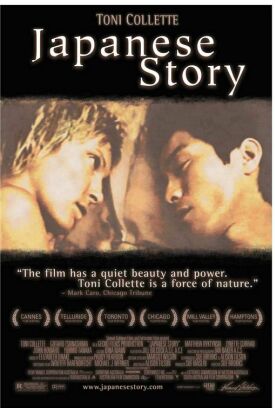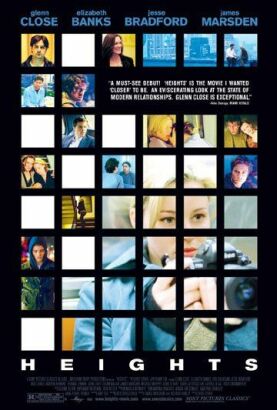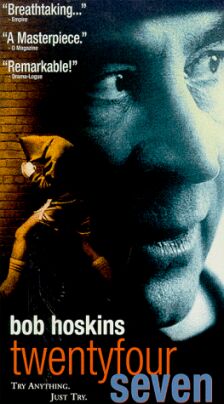Japanese Story
Japanese Story, an Australian movie written by Alison Tilson and directed by Sue Brooks, tells what there is to tell about the life-changing experience of Sandy Edwards (Toni Colette), a geologist instructed by her company to escort a Japanese businessman, Tachibana Hiromitsu (Gotaro Tsunashima), around the Western Desert of Australia for reasons more or less obscure. When their SUV gets stuck, the two have a brief brush with mortality, which brings them together in spite of their respective prejudices — an intimacy which soon leads to a sexual relationship.
This is one of only two things that happen in the film, once the situation is set up. The second thing that happens cannot be told without giving away too much, but it would amount to a surprising twist in the plot if there were any more of a plot than there is to put a twist in. It also makes the first and only other happening rather less important by comparison. Hiro (as Sandy calls him) has a wife and child back in Japan, and you’d think that this familiar but still highly-interesting situation would provide plenty for the movie to be getting on with. The Misses Tilson and Brooks perfer to take things in a quite different direction
Mostly their film consists, like Sophia Coppola’s overpraised and now Oscar-nominated Lost in Translation, of nothing but people having feelings. Maybe there is something peculiarly Japanese about this kind of narrative stasis. At any rate, the authors’ intention is, I think, to make it look like a Japanese Japanese movie, especially in its slowness of pace and its visual emphases. And there is no denying that the glorious and spacious landscapes of the Australian desert are pleasingly photographed.
But there is not much else for us to see, and the story is not interesting enough to sustain it at feature-length. There are some subtleties of imagery and theme — which also cannot be gone into lest they give away event number two. But they are in any case few and isolated and get swallowed up in the sustained emotion of Miss Colette, always a fine and very watchable actress, from that event until the conclusion.
You may think for a moment that there is also here an element of Nicholas Roeg’s Walkabout (1971). There too a white Australian female has to go into the wild outback in order to learn how to be more authentic, natural and sexual from the ethnic other. But that idea is not pursued very far — or not beyond the point at which we have the sense that a faint whiff of ideology clings to both pictures.
Speaking for myself, I’d much rather have seen more of Sandy’s relationship with her mum (Lynette Curran), who claims to have known Sammy Davis Jr. When Sandy casts doubt on her claim, mum says: “I met him. . . He kissed my hand and said, ‘Pleased to meet you.’”
“That’s not knowing him!” says Sandy scornfully.
“It’s more than I got out of your father in 30 years,” replies mum.
It’s a great joke, but it’s stuck like the SUV out in the middle of a narrative desert.
Discover more from James Bowman
Subscribe to get the latest posts to your email.






